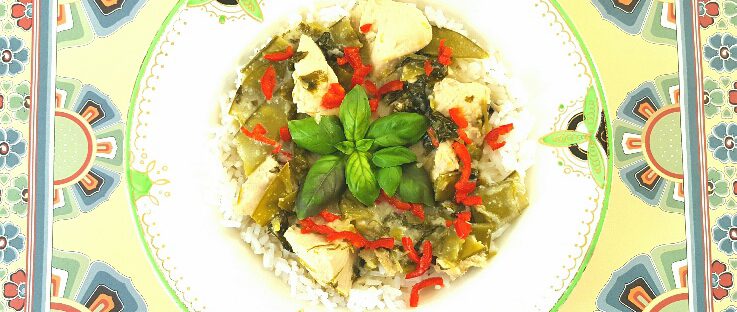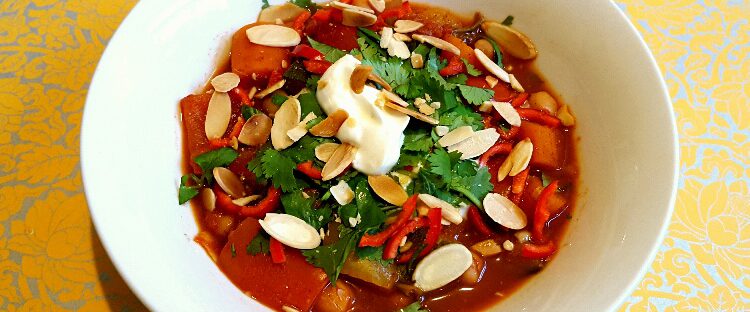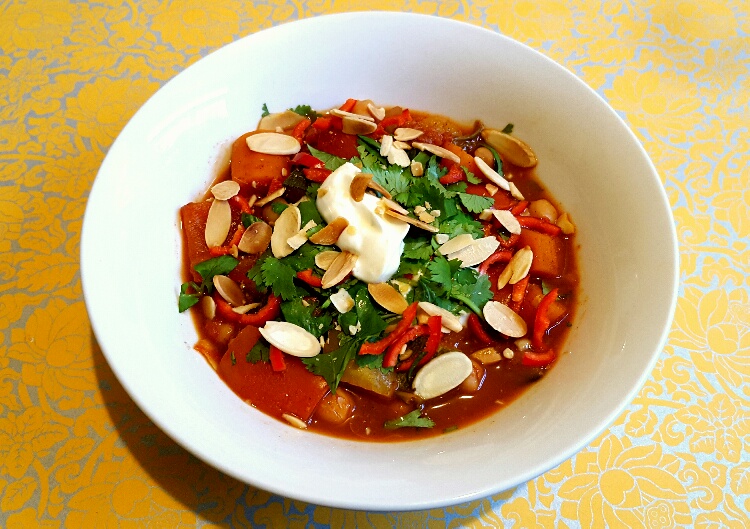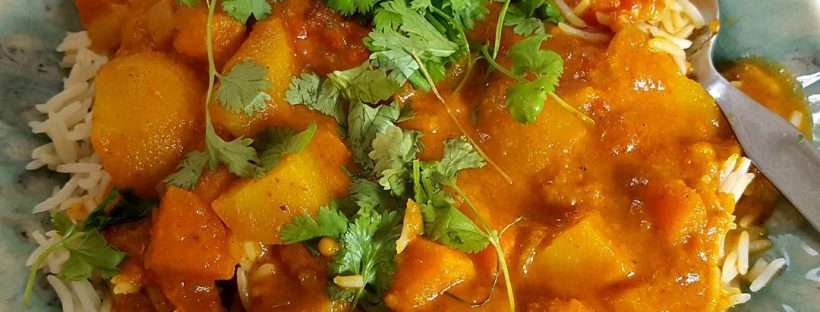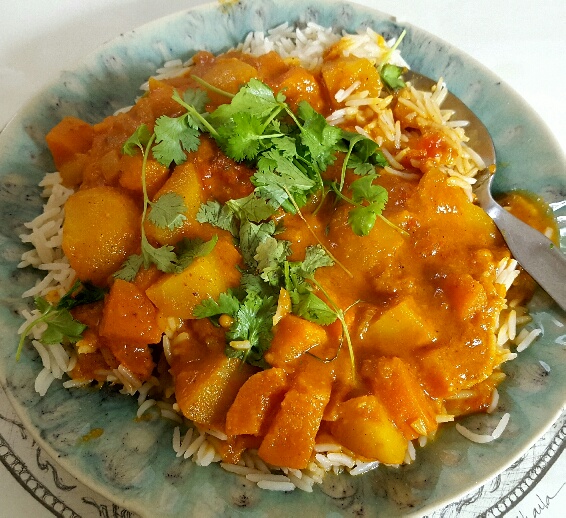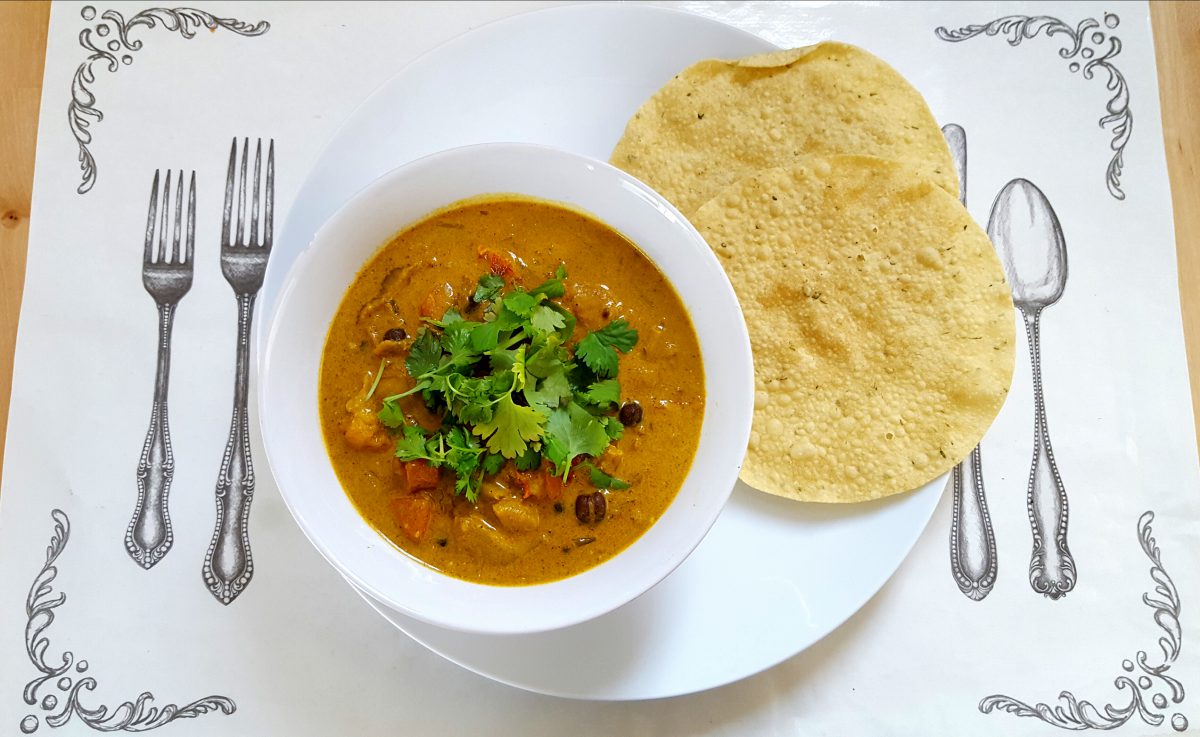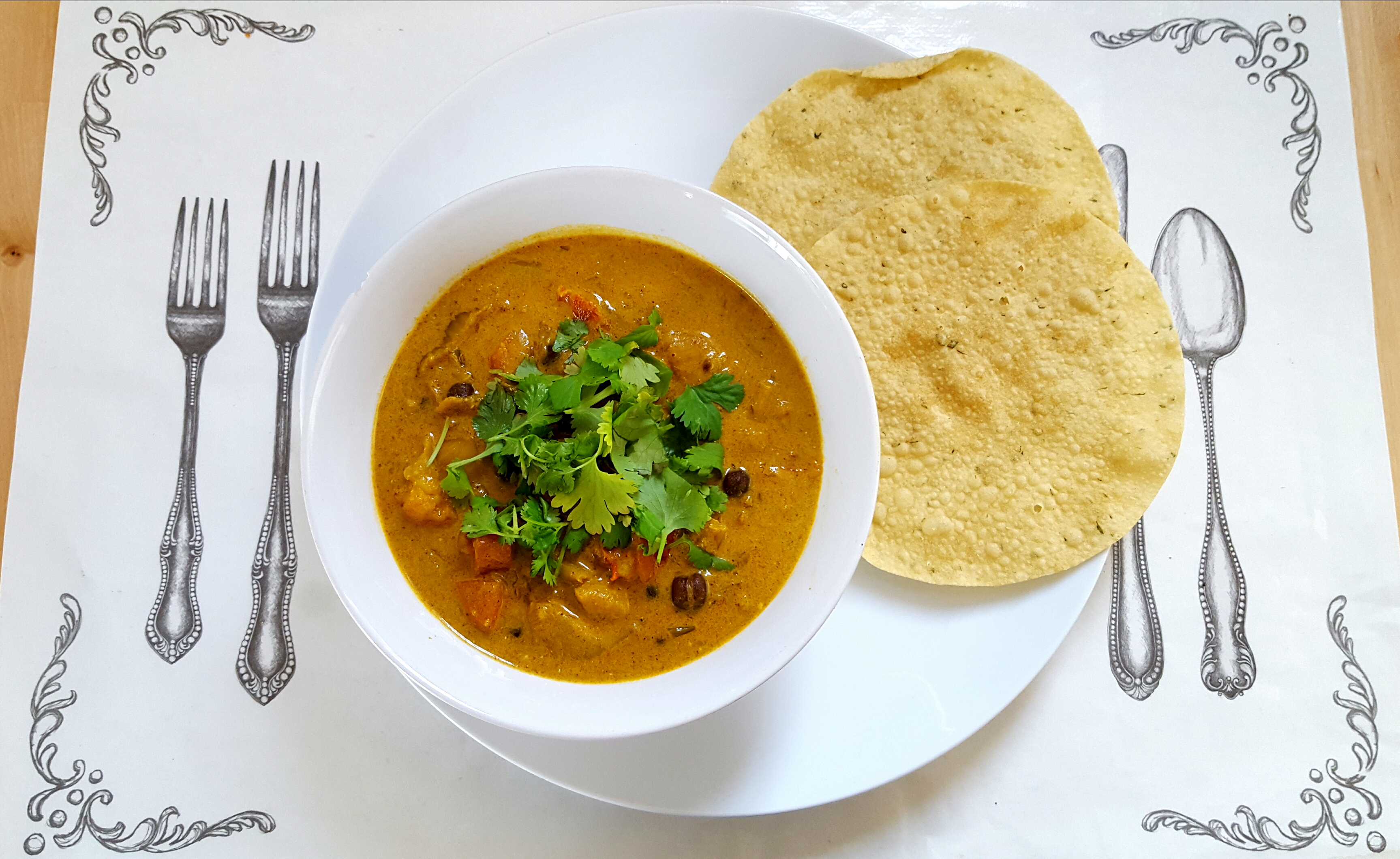
Thai Green Curry by The Fat Foodie
When I was at work yesterday I found myself pondering over what I was going to make for dinner. I knew I had a pack of chicken breasts in the fridge, but I was a bit fed up of making the same chicken dishes over and over again. However, I remembered that I had a thick chunk of fresh root ginger in the fridge as well as a jar of minced lemongrass in the cupboard, so I found myself thinking about making a Thai curry.
I’ve never made a Thai green curry from scratch before because I’ve always thought that they require ridiculous amounts of individual ingredients and, let’s be honest here, sometimes after a long day at work you can’t be bothered with all of that faff-on, can you? However, after a brief mootch in the Thai cookbook section at work (one of the benefits of working in a bookshop!) I actually realised that it doesn’t really take that much to make a Thai green curry after all and that, with the exception of having to buy fish sauce and a packet of mangetout on my way home, I was all set.
Now, I’m going to offer a word of advice here and I really hope you take it. I’ve never cooked with fish sauce before so I added it after sweating off my spices, ginger and lemongrass, but this was a huge mistake. IT FREAKIN’ STINKS!!! I’m not kidding, this was an ‘open all of the doors and windows’ job. This was a ‘thank God the living room door was closed so the smell didn’t meander up into any of the bedrooms’ jobs. It was horrific. So my advice is: only add the fish sauce after you’ve already added the coconut milk so that it blends into the curry sauce without releasing its infernal pungent aroma into your kitchen.
After I’d added the coconut milk and allowed my nasal passages to dissipate the strong stench of the fish sauce I steeled myself and tasted the curry sauce and… it was delicious. You couldn’t taste any aspect of the fish sauce whatsoever, but it had definitely added a richness to the Thai green curry that it would have sorely lacked had I omitted it. Please trust me and use the fish sauce, just don’t smell it. Ever.
I loved this Thai green curry and so did my family. It’s rich, multi-flavoured and very satisfying and it makes a nice change from the usual Indian curries I tend to make a lot. Its coconut milk base carries the delicate notes of root ginger and lemongrass without overpowering the chicken and making it taste too sweet. I don’t think it’ll be long before I’m making this for dinner again, but you can be damn sure I’ll be adding the fish sauce AFTER I’ve added the coconut milk. I won’t make that mistake again!
Ingredients:
2 tbsp sesame oil
2 tbsps minced fresh root ginger
1 tbsp minced lemongrass (or 2 crushed lemongrass stalks)
1 mild red chilli (finely chopped)
1 tsp ground cumin
1 tsp asafoetida
1/2 a bunch of fresh coriander (chopped)
1/2 a bunch of basil (chopped)
2 tbsps fish sauce
2 tbsps lime juice (or the juice of 2 limes)
400g of tinned coconut milk
80g desiccated coconut
6 chicken breasts (cut into bite-sized pieces)
60g mangetout (cut into bite-sized pieces)
Rice
Method:
In a large saucepan heat the sesame oil and once hot add the ginger, lemongrass, chopped chilli, cumin and asafoetida.
Add the chicken pieces, tin of coconut milk, lime juice and fish sauce and leave to simmer for 10-15 mins.
Start your rice cooking.
Add the mangetout, basil, coriander and coconut cream and cook for another couple of minutes.
Drain your rice.
If you used whole lemongrass stalks then just before serving remove them from the Thai green curry.
Serve on top of the rice with fresh basil (and a bit more chopped chilli if you like).
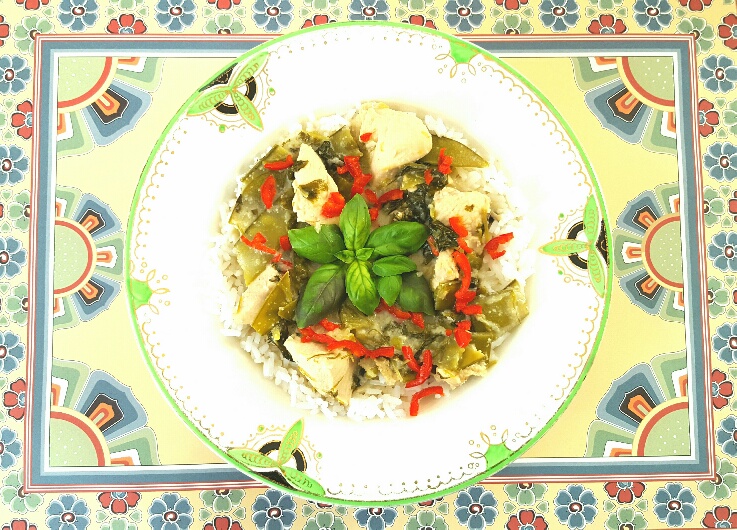
Thai Green Curry by The Fat Foodie
 Copyright protected by Digiprove © 2017-2018
Copyright protected by Digiprove © 2017-2018 